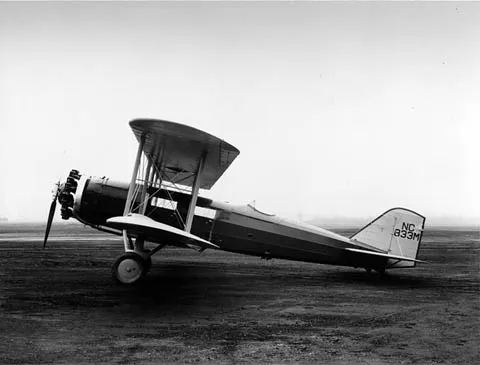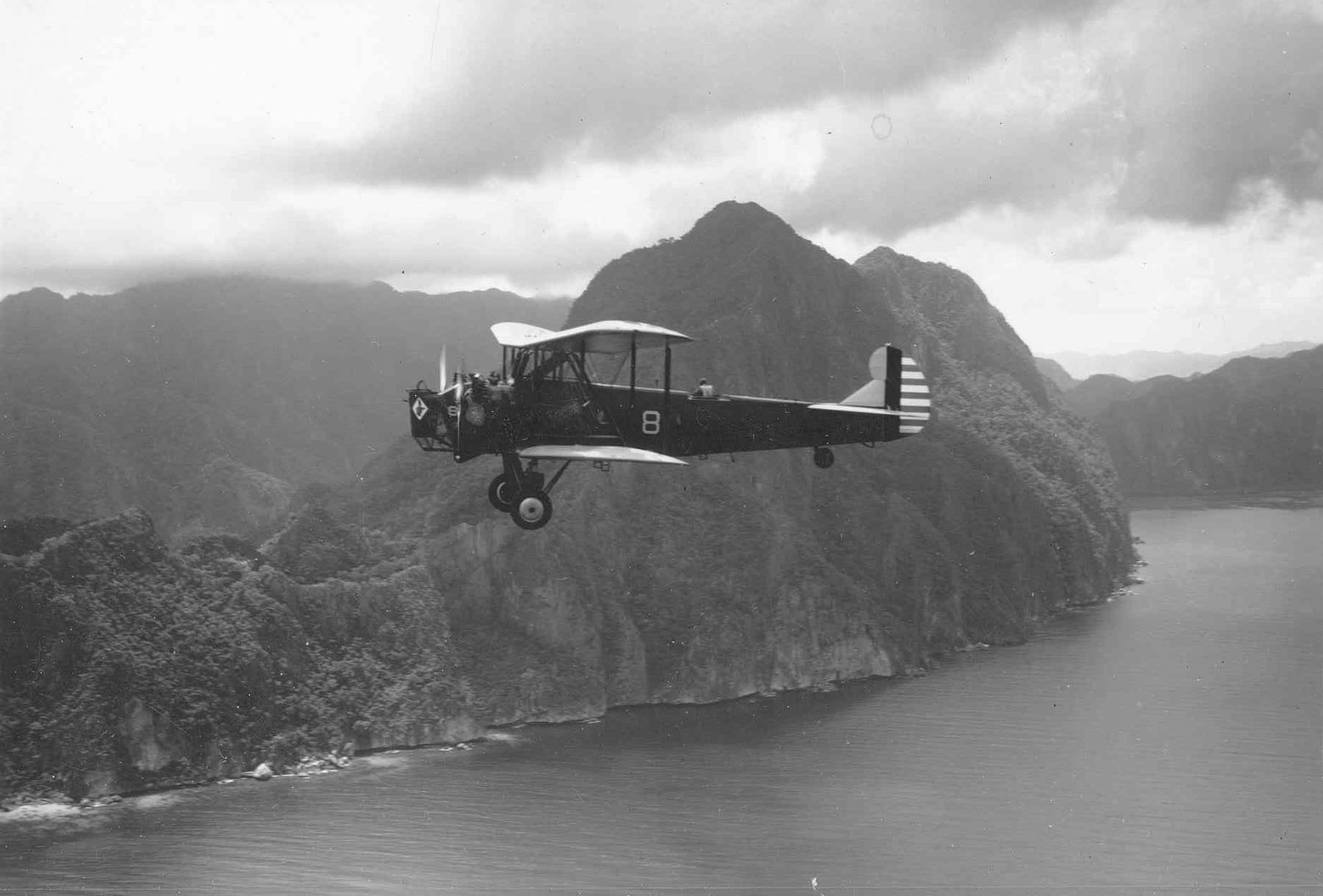|
Keystone B-6
The Keystone B-6 was a biplane bomber developed by the Keystone Aircraft company for the United States Army Air Corps. Design and development In 1931, the United States Army Air Corps received five working models (Y1B-6s) of the B-6 bomber. The ''Y1B-'' designation, as opposed to a ''YB-'' designation, indicates funding outside normal fiscal year procurement. Two of these were redesignations of LB-13s; three were re-engined B-3As. The Air Corps placed an order for 39 production models on 28 April 1931, with deliveries between August 1931 and January 1932.Baugher, Joe"Keystone B-6."''American Military Aircraft,'' 11 July 1999. Retrieved: 29 July 2011. At the same time, an order was placed for 25 B-4As, the same aircraft but mounting Pratt & Whitney engines instead of Wright Cyclones. Despite their lower sequence number, the B-4As would be delivered last. These were the last canvas-and-wood biplane bombers ordered by the Air Corps. The performance of the B-6A varied little from ... [...More Info...] [...Related Items...] OR: [Wikipedia] [Google] [Baidu] |
Mail Plane
A mail plane is an aircraft used for carrying mail. Aircraft that were purely mail planes existed almost exclusively prior to World War II. Because early aircraft were too underpowered to carry cargoes, and too costly to run any "economy class" passenger-carrying service, the main civilian role for aircraft was to carry letters faster than previously possible. In 1934, some mail services in the USA were operated by the United States Army Air Corps, soon ending in the Air Mail scandal. In the past, mail-carrying aircraft had to carry a special official emblem on the fuselages; in case of British-registered aircraft, a special ''Royal Air Mail pennant'' (a blue triangular flag with a crowned bugle emblem in yellow and the letters "ROYAL AIR MAIL" in white) would sometimes be flown as well. From the late 1940s, mail planes became increasingly rare, as the increasing size of aircraft and economics dictated a move towards bulk carriage of mail onboard airline flights, and this remai ... [...More Info...] [...Related Items...] OR: [Wikipedia] [Google] [Baidu] |
WikiProject Aircraft
A WikiProject, or Wikiproject, is a Wikimedia movement affinity group for contributors with shared goals. WikiProjects are prevalent within the largest wiki, Wikipedia, and exist to varying degrees within sister projects such as Wiktionary, Wikiquote, Wikidata, and Wikisource. They also exist in different languages, and translation of articles is a form of their collaboration. During the COVID-19 pandemic, CBS News noted the role of Wikipedia's WikiProject Medicine in maintaining the accuracy of articles related to the disease. Another WikiProject that has drawn attention is WikiProject Women Scientists, which was profiled by '' Smithsonian'' for its efforts to improve coverage of women scientists which the profile noted had "helped increase the number of female scientists on Wikipedia from around 1,600 to over 5,000". On Wikipedia Some Wikipedia WikiProjects are substantial enough to engage in cooperative activities with outside organizations relevant to the field at issue. For e ... [...More Info...] [...Related Items...] OR: [Wikipedia] [Google] [Baidu] |
Tangier Island
Tangier is a town in Accomack County, Virginia, United States, on Tangier Island in Chesapeake Bay. The population was 727 at the 2010 census. Since 1850, the island's landmass has been reduced by 67%. Under the mid-range sea level rise scenario, much of the remaining landmass is expected to be lost in the next 50 years and the town will likely need to be abandoned. The people who came to permanently settle the island arrived in the 1770s, and were farmers. In the late 19th century, the islanders began to become more dependent on harvesting crabs and oysters from the Chesapeake Bay. As the waterman livelihood became more important and more lucrative, there were often conflicts among the oyster dredgers and oyster tongers in the bay, and between those living in Maryland and those living in Virginia. Many people who live on Tangier speak a distinctive dialect of American English. Scholars have disputed how much of the dialect is derived from British English lexicon and phonet ... [...More Info...] [...Related Items...] OR: [Wikipedia] [Google] [Baidu] |
Machine Gun
A machine gun is a fully automatic, rifled autoloading firearm designed for sustained direct fire with rifle cartridges. Other automatic firearms such as automatic shotguns and automatic rifles (including assault rifles and battle rifles) are typically designed more for firing short bursts rather than continuous firepower, and are not considered true machine guns. As a class of military kinetic projectile weapon, machine guns are designed to be mainly used as infantry support weapons and generally used when attached to a bipod or tripod, a fixed mount or a heavy weapons platform for stability against recoils. Many machine guns also use belt feeding and open bolt operation, features not normally found on other infantry firearms. Machine guns can be further categorized as light machine guns, medium machine guns, heavy machine guns, general purpose machine guns and squad automatic weapons. Similar automatic firearms of caliber or more are classified as autocannons, rat ... [...More Info...] [...Related Items...] OR: [Wikipedia] [Google] [Baidu] |
Browning Arms Company
Browning Arms Company (originally John Moses and Matthew Sandefur Browning Company) is an American marketer of firearms and fishing gear. The company was founded in Ogden, Utah, in 1878 by brothers John Moses Browning (1855–1926) and Matthew Sandefur Browning (1859–1923). The company offers a wide variety of firearms, including shotguns, rifles, and pistols. Other products include fishing rods and reels, gun safes, sport bows, knives and bicycles. Initially, the company marketed the sporting (non-military) designs of John Browning, one of the world's most influential and prolific firearms inventors. Nearly all of John Browning's innovative designs have been manufactured under license by other companies, including Winchester, Colt, Remington, FN Herstal, and Miroku. Browning is currently a wholly owned subsidiary of FN Herstal. Browning Arms Company is best known for the A-Bolt and X-Bolt bolt-action rifles, the BAR semi-automatic rifle, the BPR pump-a ... [...More Info...] [...Related Items...] OR: [Wikipedia] [Google] [Baidu] |
Radial Engine
The radial engine is a reciprocating type internal combustion engine configuration in which the cylinders "radiate" outward from a central crankcase like the spokes of a wheel. It resembles a stylized star when viewed from the front, and is called a "star engine" in some other languages. The radial configuration was commonly used for aircraft engines before gas turbine engines became predominant. Engine operation Since the axes of the cylinders are coplanar, the connecting rods cannot all be directly attached to the crankshaft unless mechanically complex forked connecting rods are used, none of which have been successful. Instead, the pistons are connected to the crankshaft with a master-and-articulating-rod assembly. One piston, the uppermost one in the animation, has a master rod with a direct attachment to the crankshaft. The remaining pistons pin their connecting rods' attachments to rings around the edge of the master rod. Extra "rows" of radial cylinders can be added i ... [...More Info...] [...Related Items...] OR: [Wikipedia] [Google] [Baidu] |
Wright R-1820
The Wright R-1820 Cyclone 9 is an American radial engine developed by Curtiss-Wright, widely used on aircraft in the 1930s through 1950s. It was produced under license in France as the Hispano-Suiza 9V or Hispano-Wright 9V, and in the Soviet Union as the Shvetsov M-25. Design and development The R-1820 Cyclone 9 represented a further development of the Wright P-2 engine dating back to 1925. Featuring a greater displacement and a host of improvements, the R-1820 entered production in 1931. The engine remained in production well into the 1950s. The R-1820 was built under license by Lycoming, Pratt & Whitney Canada, and also, during World War II, by the Studebaker Corporation. The Soviet Union had purchased a license for the design, and the Shvetsov ''OKB'' was formed to metricate the American specification powerplant for Soviet government-factory production as the ''M-25'', with the R-1820's general design features used by the Shvetsov design bureau for many of their future rad ... [...More Info...] [...Related Items...] OR: [Wikipedia] [Google] [Baidu] |
Wright R-1820-1
The Wright R-1820 Cyclone 9 is an American radial engine developed by Curtiss-Wright, widely used on aircraft in the 1930s through 1950s. It was produced under license in France as the Hispano-Suiza 9V or Hispano-Wright 9V, and in the Soviet Union as the Shvetsov M-25. Design and development The R-1820 Cyclone 9 represented a further development of the Wright P-2 engine dating back to 1925. Featuring a greater displacement and a host of improvements, the R-1820 entered production in 1931. The engine remained in production well into the 1950s. The R-1820 was built under license by Lycoming, Pratt & Whitney Canada, and also, during World War II, by the Studebaker Corporation. The Soviet Union had purchased a license for the design, and the Shvetsov ''OKB'' was formed to metricate the American specification powerplant for Soviet government-factory production as the ''M-25'', with the R-1820's general design features used by the Shvetsov design bureau for many of their future radi ... [...More Info...] [...Related Items...] OR: [Wikipedia] [Google] [Baidu] |
Keystone B-4
The Keystone B-4 was a biplane bomber, built by the Keystone Aircraft company for the United States Army Air Corps. Design and development Originally ordered by the United States Army Air Corps as the LB-13 light bomber. When the ''LB-'' designation was dropped in 1930, the first five planes were redesignated Y1B-4. (The ''Y1B-'' designation indicates that funds for the design did not come from the normal annual funds.) The first B-3A (S/N 30-281) was converted to Y1B-4 configuration with the addition of R-1860-7 radial engines and low pressure tires. Because of more powerful engines, the performance of the Y1B-4 was a slight improvement on the B-3, but the only difference between the two planes was their engines. On April 28, 1931, the army ordered 25 improved Y1B-4s as the Keystone B-4A. This production version was part of the last biplane bomber order made by the Army Air Corps (along with 39 B-6As, identical in all respects except their make of engine), and the B-4As, deliv ... [...More Info...] [...Related Items...] OR: [Wikipedia] [Google] [Baidu] |
Martin B-10
The Martin B-10 was the first all-metal monoplane bomber to be regularly used by the United States Army Air Corps, entering service in June 1934.Jackson 2003, p. 246. It was also the first mass-produced bomber whose performance was superior to that of the Army's pursuit aircraft of the time.Eden and Moeng 2002, p. 931. The B-10 served as the airframe for the B-12, B-13, B-14, A-15 and O-45 designations using Pratt & Whitney engines instead of Wright Cyclones. A total of 348 of all versions were built. The largest users were the US, with 166, and the Netherlands, with 121. Design and development The B-10 began a revolution in bomber design. Its all-metal monoplane airframe, along with its features of closed cockpits, rotating gun turrets (almost simultaneously with the 1933 British Boulton & Paul Overstrand biplane bomber's own enclosed nose-turret), retractable landing gear, internal bomb bay, and full engine cowlings, became the standard for bomber designs worldwide for de ... [...More Info...] [...Related Items...] OR: [Wikipedia] [Google] [Baidu] |
Langley Field
Langley may refer to: People * Langley (surname), a common English surname, including a list of notable people with the name * Dawn Langley Simmons (1922–2000), English author and biographer * Elizabeth Langley (born 1933), Canadian performer, choreographer, teacher and dramaturge * Langley Wakeman Collyer (1885–1947), one of the Collyer brothers * Langley Fox (born 1989), American illustrator and model * Langley "Lang" Hancock (1909–1992) Australian iron ore magnate * Langley Kirkwood (born 1973), South African actor and triathlete * Langley Frank Willard Smith (1897–1917) Canadian flying ace Places Canada *Langley, British Columbia (district municipality), Township of Langley – a district municipality in the Lower Mainland of British Columbia **Fort Langley, a community in the Township of Langley, historically referred to simply as "Langley" *Langley, British Columbia (city), City of Langley – separately incorporated urban municipality encompassed ... [...More Info...] [...Related Items...] OR: [Wikipedia] [Google] [Baidu] |







